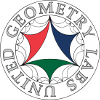Research Questions
I'm generally interested in foundational questions in Heisenberg geometry and related subjects. In particular, here are some questions that would be good to answer:
Heisenberg group geometry
Is there a quasi-conformal map of the Heisenberg group that takes the x-axis to the t-axis? (see Juha Heinonen's "33 questions")
Is a cube bi-Lipschitz to a ball in the Heisenberg group?
Does the BL Moser theorem hold in the Heisenberg group?
Relatedly, suppose two adjacent chambers (say, cubical) are filled with gas and then the wall between the chambers is removed. Is there a BL map that equalizes the gas density? Can this map be chosen to pointwise fix the boundary? (cf Burago-Kleiner 2012)
Is there a Kakeya set in the Heisenberg group? (that is, the set should have measure zero and contain a left-translate of every unit-length geodesic starting at the origin)
Heisenberg group dynamics
Is the Gauss transformation on the Heisenberg group ergodic? (see papers with Joseph Vandehey)
Is the Gauss transformation in the complex plane ergodic (apart from the symmetric case studied by Hensley and Nakada)?
Heisenberg group analysis
Suppose a self-map of the Heisenberg group is Pansu differentiable on an open set with a continuous derivative. Is it then classically C^1 on the set? (Compare Magnani's "surprising case" in "The coarea formula for real-valued...")
Is there a non-constant quasi-regular self-map of the Heisenberg group that misses a point?
Complex hyperbolic geometry
Is a quasi-isometry from the complex hyperbolic plane to itself bounded distance from a bi-Lipschitz map? (see paper on BL extension from boundaries... where the non-planar case is addressed)
Are area-minimizing bubbles in complex hyperbolic space spherical? (Mondino-Nardulli show that they are for sufficiently small bubbles)
Does the Dido problem on complex hyperbolic horoballs limit to the isoperimetric problem in the Heisenberg group?
Other
Let S be a separted net in R^2. Is some product SxSx...xS BL to a lattice?
Consider a triangle group acting co-compactly on a strictly convex domain in RP2. Can the Holder exponent of the boundary be computed from the representation of the Coxeter elements of the group? (see master's thesis)
Are any two lattices in a nilpotent Lie group BL equivalent? Equivalently, are any two Lambda-nets BL equivalent? (see paper with Dymarz-Li-Kelly)
Let X, Y be metric spaces. If XxR is isometric to YxR, is X isometric to R? (doesn't work for homeomorphisms)
Applications
How close is the sub-Riemannian model of human vision to biological reality (see Prandi-Remizov-Chertovskih-Boscain-Gauthier)? Can the 2D image-reconstruction methods be extended to 3D?
Computation/visualization/exposition tasks
Illustrate the main result of "Geodesics with bounded intersection number on surfaces are sparsely distributed" by Birman-Series: every hyperbolic surface has regions not visible to closed curves.
Continue work on the "snakes in the plane" game (see gallery). Make more games in the plane, in hyperbolic 3-space, or in the Heisenberg group.
Given two finite sets in the plane, find an optimal-transport pairing between them. Make a game and outreach activity out of it. Tie into the work of Laczkovich and quasicrystals (see paper with Dymarz, Kelli, Li).
Explicitly construct and illustrate the UQR mappings of 3-space appearing in the paper with Fassler and Peltonen. Start by making the analogous illustrations in the plane.
Illustrate spherical harmonics on the Heisenberg group (see, e.g. this paper), and more generally understand Fourier transforms in Carnot groups.




